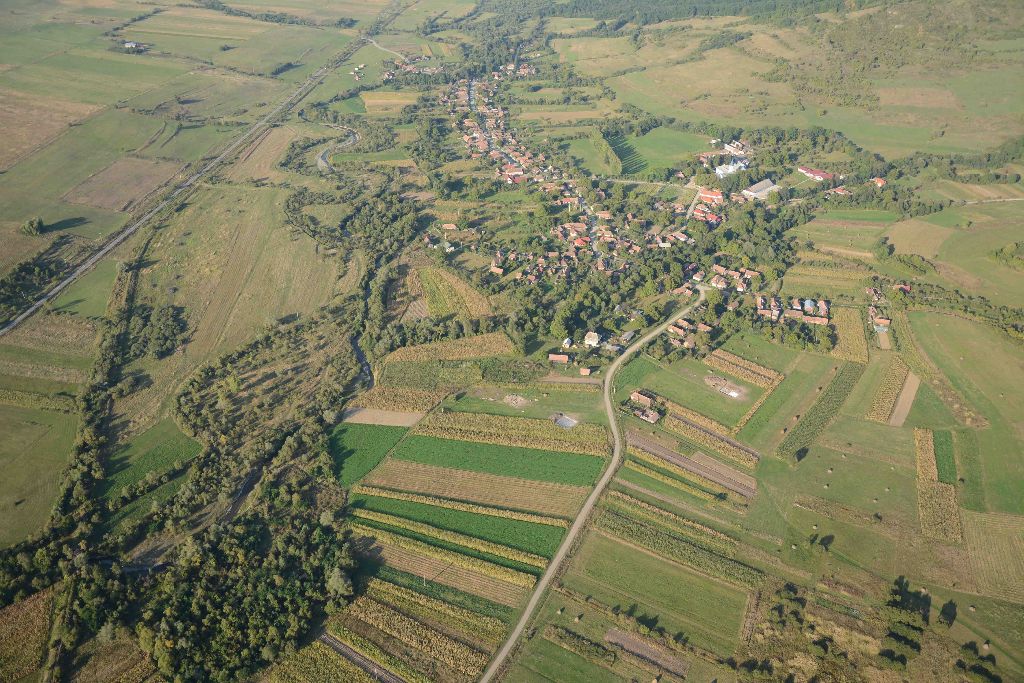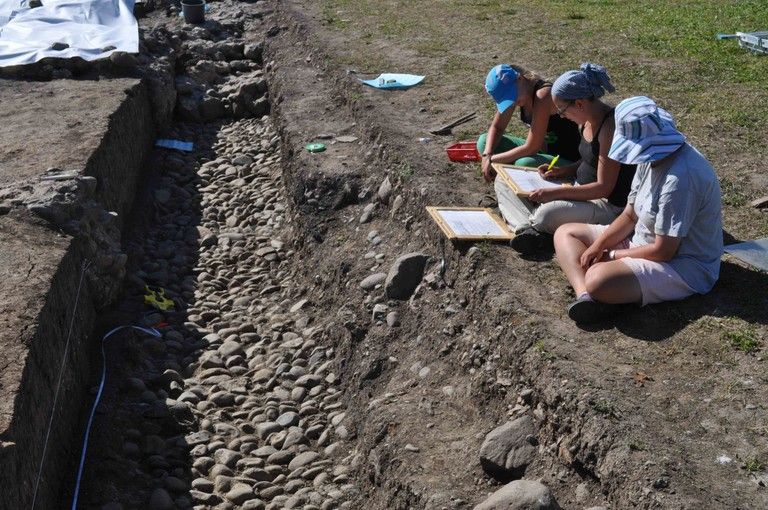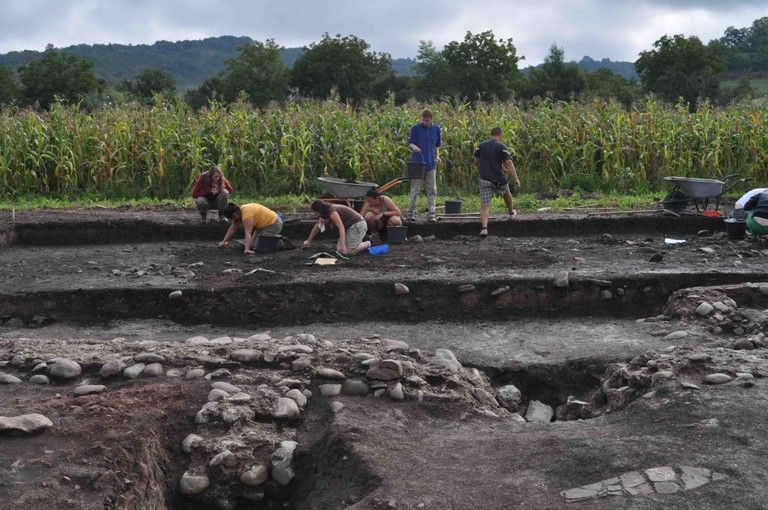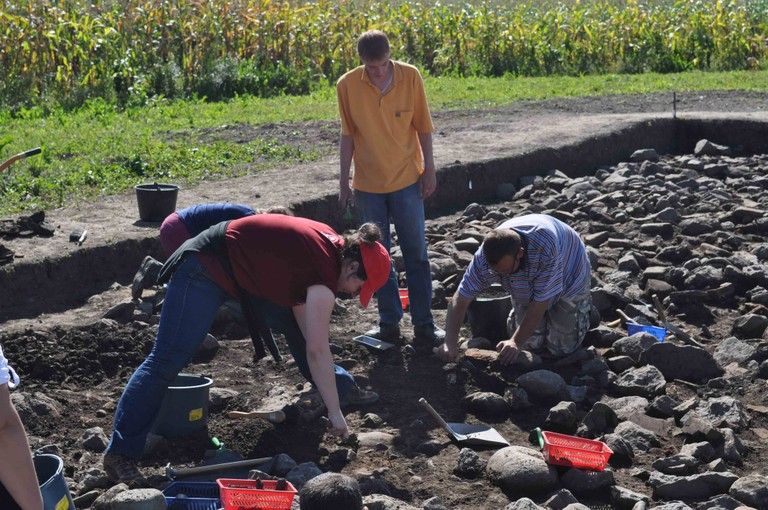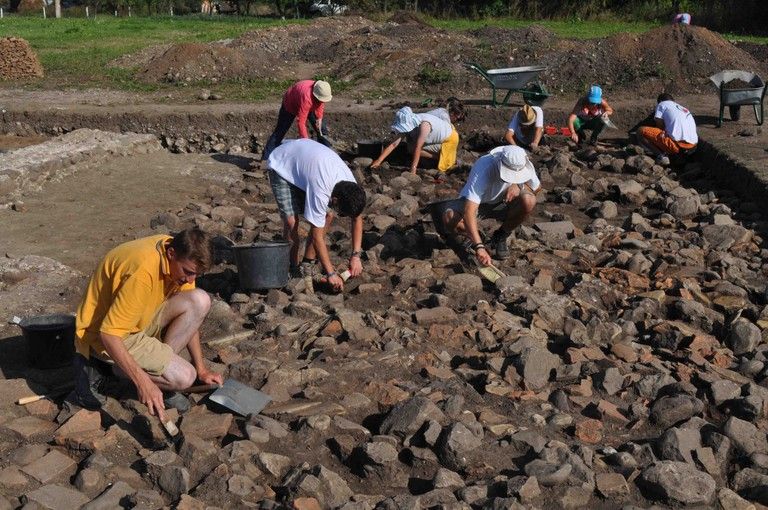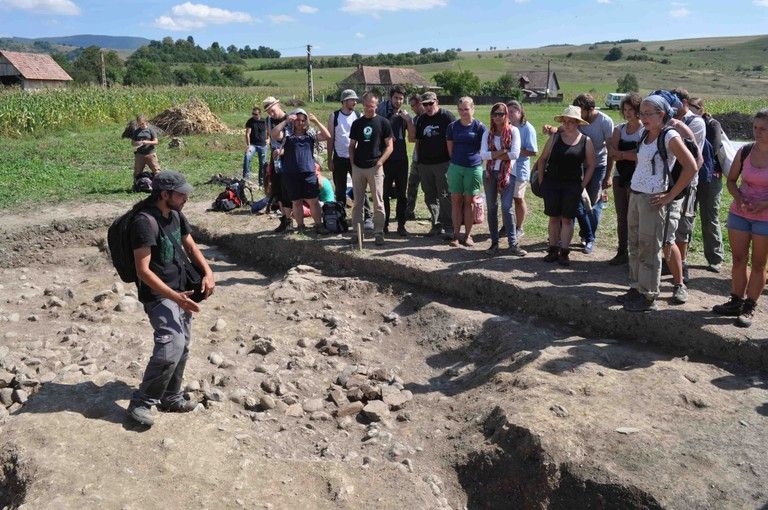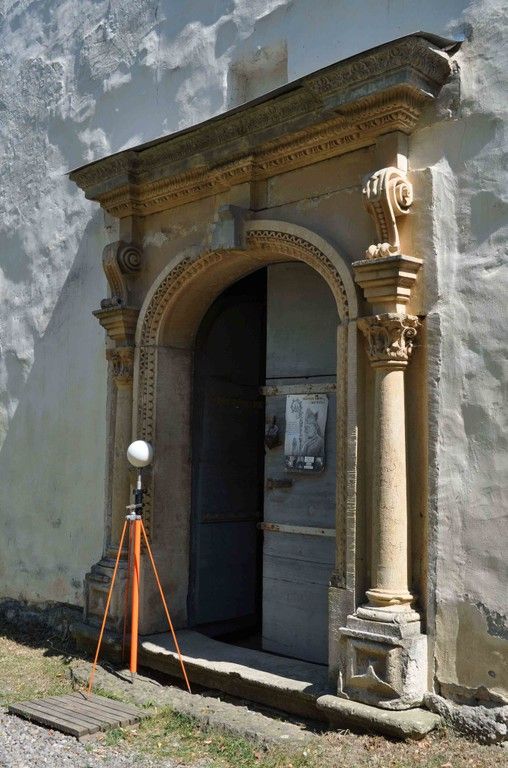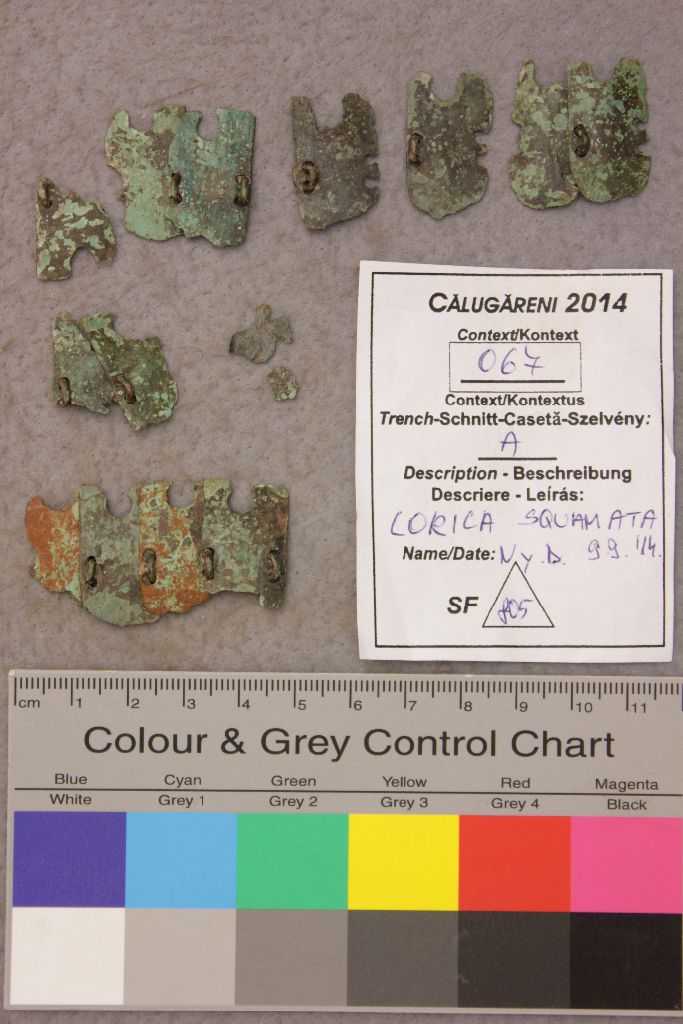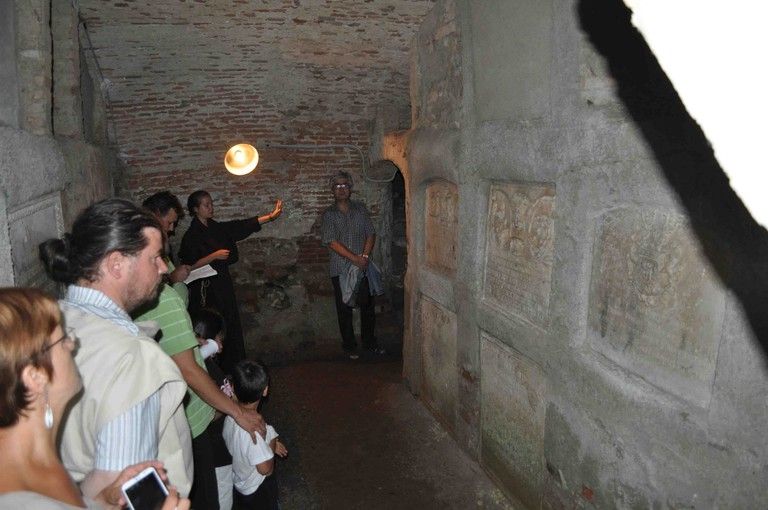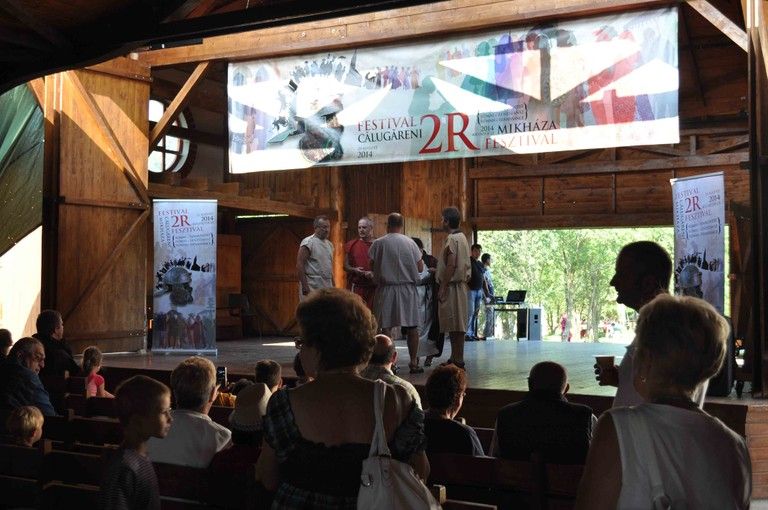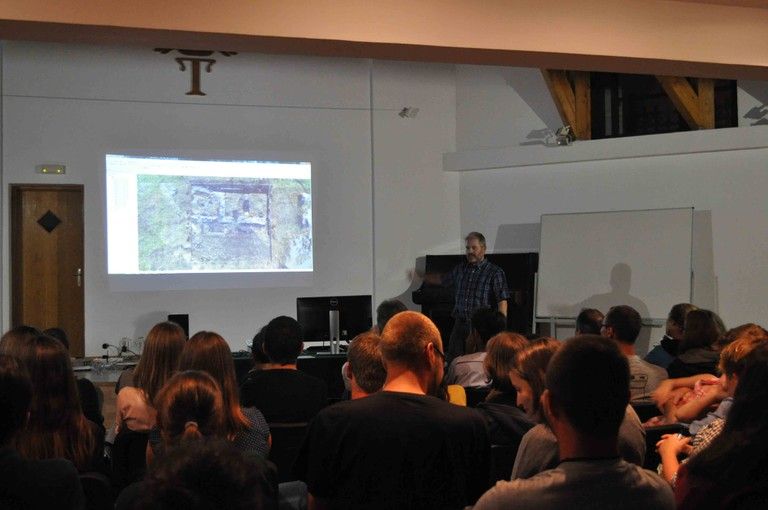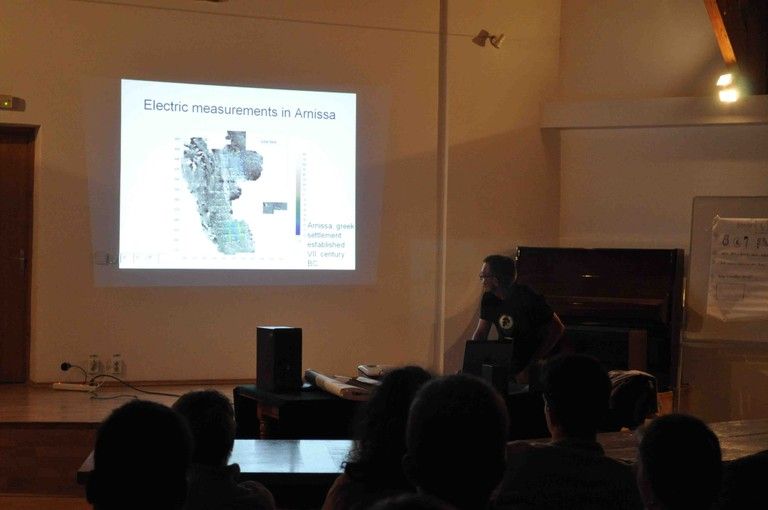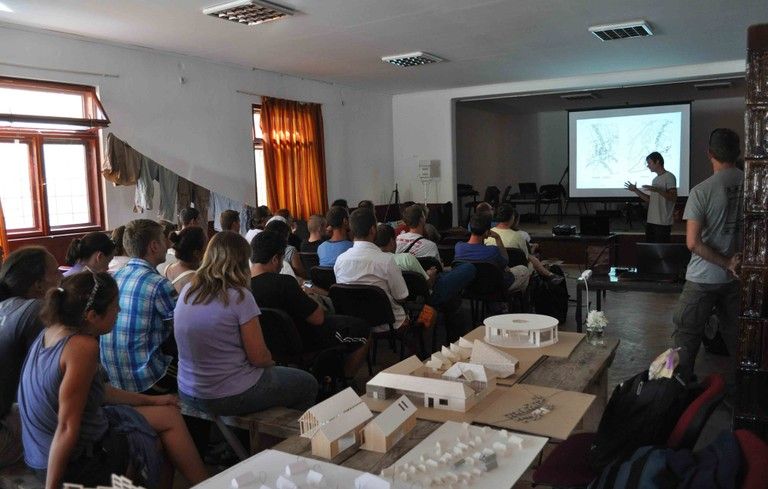Archaeological fieldschool 2014
The summer campaign on the Eastern Limes took place between the 17th of August and the 15th of September 2014 with the participation of 52 students and 18 lecturers and specialists, specialists from eight German, Romanian and Hungarian universities and the Mureș County Museum.
Our work was focusing mainly on three forts: Călugăreni, Sărăţeni and Brâncoveneşti and some watchtowers and other elements of the limes sector from Mureş County. The complex interdisciplinary and international research contributed in a considerable way to the better understanding of our limes sector.
Field survey
On the major military sites the intensive field walking combined with metal detecting survey was continued in order to determine the extent of the vici and to collect artefacts for dating the sites and specifying their internal structure.
The watchtowers situated in front of the forts were further investigated: two new watchtowers were identified by field-walking and aerial survey, one in the Becheci-Mountain in Mărculeni and another north of Vătava in the Călimani-Mountains. As far as the topographic survey concerns almost 1000 points were measured at this sites, which allowed us to develop their digital terrain models.
Geophysical survey have been undertaken on the military sites and at several watchtowers. In Călugăreni magnetic and geo-electrical resistivity survey have been made to identify the plan of the bath and to explore the area between the bath and military fort. Geomagnetic survey was also done in the vicus from Brâncoveneşti, in the fort of Sărăţeni and at the watchtower in Vătava. With geo-electrical resistivity survey parts of the fort of Sărăţeni has been located.
Excavation
During the excavation from Călugăreni, started in the last year, three different areas were investigated: the principia (Area A) in the military fort; the bath (Area B) and a portion of the road’s turnout (Area C) in the vicus.
In the principia a trench, measuring 15 x 7 m, was opened, where portion of the building with aedes, two neighboring rooms and the basilica in the front were spotted. By continuing the trench from last year other phases have been identified. It could be observed that the remains of the horizontally laid charred wood material in the lower layers had been preserved quite well. This could have been belonged whether to an older timber construction phase – threshold beam – before the stone phase, or it might be linked to the wall construction technique of the stone principia.
Several small finds have been recovered, like armor scales or a bronze statue of Mercurius. The distribution of glass fragments points to the existence of window panes in the principia.
In the bath area (Area B) the trench from last year was extended to 10 x 10 m. There were unearthed wall fragments (also traces of robbing trenches), damaged plaster fragments, floor fragments of waterproof mortar and remains of the hypocaustum system.
In Area C a building complex was investigated in the central area between the fort, bath and civilian settlement where the geomagnetic measurements indicated a turnout of the main road and a secondary road in the vicus. In two trenches (12 x 12 m) cobble- and stone structures appeared, which could have been parts of a solid walking level (courtyard). A building could be identified in this area. The rests of a clay floor indicate another older construction. In order to investigate the extent and structure of the buildings the trenches needed to be extended.
Architectural survey
In Călugăreni and Sărăţeni the architects documented vernacular monument buildings and traditional timber structures. There were elaborated projects concerning the touristic potential and possible new functions of the buildings as well as projects for presenting the archaeological sites. Just like last year, these results will be presented on a Student Conference at the Budapest University for Technology and Economics.
Measuring/Laserscanning/3D-Digital photographing
At the measuring of the archaeological finds and historical buildings both traditional and innovative methods (Laser scan, 3D-Digital photographing) were used.
Find processing and restoration
The culture house from Călugăreni housed the find processing laboratory where the finds have been cleaned and sorted. The most important ceramic forms were drawn and photographed. The restoration of the most important small finds was also carried out here. All the finds recorded as well.
A Roman and a Renaissance Festival have been organized by the Mureş County Museum on the 23rd of August in Călugăreni, where we presented our work for the public.
During the archaeological campaign from 2014 several presentations and weekend trips (Sighişoara, Târgu Mureş, Cluj-Napoca and the salt mine from Praid) were also organized.
